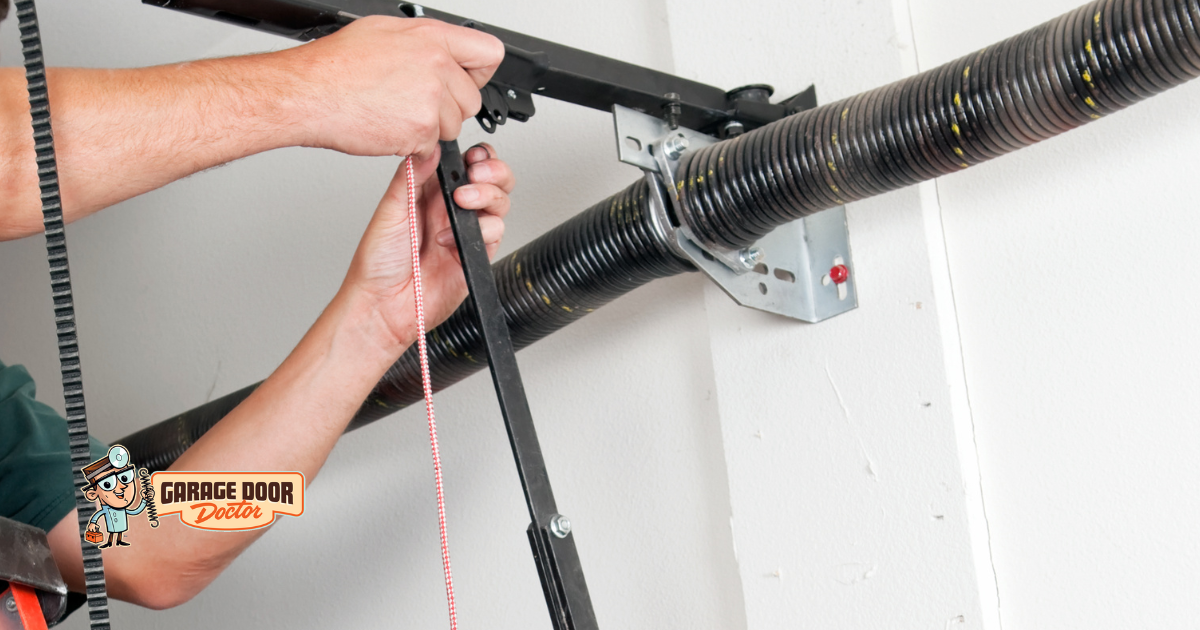
Your garage door works hard every day, opening and closing hundreds of times over the course of a year. But behind that smooth operation is one critical component: the garage door spring.
These tightly wound metal coils do the heavy lifting, balancing the weight of the door so it moves up and down safely and easily. When a spring starts to wear out or becomes unbalanced, your entire system can suffer, leading to noisy operation, uneven movement, or even a complete failure to open.
So how can you tell whether your garage door spring simply needs a quick adjustment or if it’s time for a full replacement? Here’s a homeowner’s guide from Garage Door Doctor to help you identify the difference.
1. Understanding the Role of Garage Door Springs
Before spotting the warning signs, it helps to understand what the springs actually do.
There are two main types of garage door springs:
- Torsion Springs: Mounted above the door opening, these springs twist and unwind to lift the door.
- Extension Springs: Located on the sides of the door, these stretch and contract to counterbalance the door’s weight.
Both are under extreme tension, and that’s why adjusting or replacing them is never a DIY job—it requires professional tools and expertise to ensure your safety.
2. Signs Your Garage Door Spring Needs Adjustment
Sometimes, your garage door spring isn’t broken—it’s just out of balance or tension. Here are a few clues that may suggest it’s time for an adjustment:
• The door feels heavy but still opens
If you notice you’re using more force than usual to manually lift the door, your spring may have lost tension and needs recalibration.
• The door opens unevenly
If one side of the garage door rises faster or higher than the other, it could indicate an imbalance in the spring system.
• The door stops mid-way or jerks while moving
An improperly tensioned spring can cause the opener to struggle, resulting in jerky or incomplete movement.
• The cables look loose
Loose or sagging cables can be a sign that your spring tension is off, not necessarily that the spring is broken.
If you experience these issues, a trained technician from Garage Door Doctor can perform a professional spring adjustment to restore smooth, balanced movement.
3. Signs It’s Time to Replace the Garage Door Spring
Unfortunately, springs don’t last forever. On average, most are rated for 10,000 cycles, which is about 7 to 10 years for most homes. When they’re near the end of their lifespan, you’ll notice more serious symptoms:
• The door won’t open at all
A completely broken torsion or extension spring will make the door too heavy for your opener to lift. You may hear a loud snap just before it happens.
• There’s a visible gap in the spring
Inspect the torsion spring above your door—if you see a clean break or gap between the coils, it’s a clear sign the spring has snapped.
• The door slams shut suddenly
When a spring breaks, the counterbalance is lost, and the door may fall quickly when closing—a serious safety hazard.
• Loud banging noises
If you hear a sharp bang from your garage (even when you’re not using it), it could be the sound of a spring breaking under tension.
4. Adjustment vs. Replacement: How to Decide
- Adjustment is appropriate when the spring is intact but slightly out of balance or has lost some tension.
- Replacement is necessary when the spring is broken, rusted, or nearing the end of its life cycle.
A professional inspection is the best way to determine which one you need. Attempting to fix or tighten a spring yourself can lead to injury or damage to your garage door system.
5. Prevent Future Spring Problems
Regular garage door maintenance is the key to long-lasting performance. Here are a few preventive tips:
- Schedule a yearly inspection to check spring tension, balance, and lubrication.
- Avoid overusing your opener, limit unnecessary openings and closings.
- Replace both springs at once if one breaks to maintain even tension.
- Keep the area around your springs clean and dry to prevent rust.
Trust Garage Door Doctor for Safe, Reliable Service
Whether your spring needs a minor adjustment or a complete replacement, Garage Door Doctor is here to help. Our experienced technicians are trained to handle every type of spring safely and efficiently, ensuring your garage door operates smoothly and securely.
Don’t wait until a spring snaps or your door stops working; schedule your professional inspection today with Garage Door Doctor. Visit or give us a call to book your service and restore your garage door’s performance.

